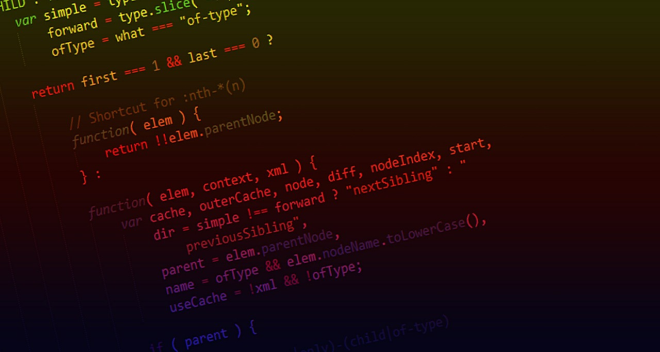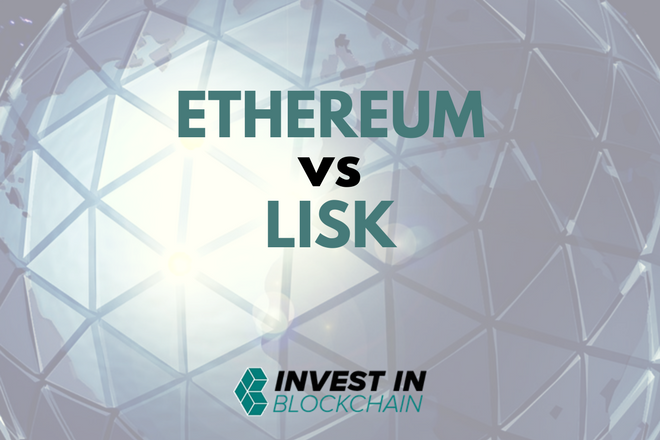Bitcoin may have popularized blockchains, but Ethereum and Lisk are showing how useful they can be.
Distributed computing platforms provide an environment for developers to build decentralized apps, or “dapps” for short. With smart contracts to run them and a cryptocurrency to provide processing incentive, blockchain networks like these can function like a worldwide computer. Everyone has access, and everyone can build, utilize, and contribute.
Ethereum and Lisk are two of the more popular dapp platforms in operation today. They have plenty in common with each other, but there are some fundamental differences that allow them to co-exist without stepping on each other’s decentralized toes.
Ethereum vs Lisk: The Elevator Pitch
The Ethereum platform allows users to build and deploy decentralized apps which are programs that act like old school apps but run on the blockchain. Self-executing smart contracts set dapps in motion to keep the network traceable and transparent. The whole thing is powered by the network’s native token, ether (ETH), which is the second most popular cryptocurrency on the market.
Lisk is a blockchain application platform that handles decentralized apps and contracts like Ethereum. Lisk’s goal is to open dapp development to a wider audience by using JavaScript as its main programming language. Anyone familiar with JavaScript can make the transition to blockchain development with a minimum of overhead. Lisk is also structured to use sidechains instead of dumping everything on the main blockchain, which aids in scalability and security.
Ethereum vs Lisk: Origins
Ethereum was proposed in 2013 by Vitalik Buterin, but it didn’t get much attention at the time. A year later, Buterin released a whitepaper that described smart contracts running on a decentralized application platform, a concept that would transform blockchain technology into a tool of distributed consensus. That got people’s attention, and soon the Ethereum Foundation was born.
Ethereum was funded by a crowdsale and continued to attract buzz over the months and years. Developers experimented with dapps and cryptocurrency traders picked up ether by the fistful. There have been a few rough patches in Ethereum’s development since then, but it’s well-funded with a sharply defined roadmap for the future.
Lisk appeared in 2016 as a fork of Crypti, a now-defunct cryptocurrency that powered the first JavaScript decentralized application platform. Developers Max Kordek and Oliver Beddows took the original code and pushed in a new direction. Accessibility was a real issue in the blockchain development community, they thought. Why not create a decentralized application platform everyone could use right away?
The team’s initial strategy with Lisk was to talk it up as “Ethereum for JavaScript developers”. This created enough buzz for a successful ICO, temporarily bumping the LSK token to the second most traded coin on the market. More funding was eventually secured, allowing Lisk to carve out its own space as a dapp platform built for privacy and scalability.
Ethereum vs Lisk: Programming Languages

Ethereum leverages a few different programming languages for dapp creation. The most popular is Solidity, a JavaScript-like library with dedicated functions for writing smart contracts. Solidity is easy enough to use, but its applications outside of Ethereum are just about non-existent.
Lisk’s most enticing feature is the ability to develop dapps using JavaScript, one of the most popular programming languages in the world. Familiar underpinnings reduce the barrier of entry to practically nothing, making it one of the easiest ways to get into blockchain app development. If you can use JavaScript, you can use Lisk.
Programmers will debate the virtues and pitfalls of JavaScript and Solidity until their keyboards turn to dust. Neither one is necessarily better than the other, but JavaScript does have the advantage of being a mature language with a large, well-established following.
Ethereum vs Lisk: Design & Architecture
Blockchains and Sidechains. The phrase sounds like the punchline from a Dilbert comic, but security and scalability are serious issues in the blockchain world. As more people make more transactions, networks struggle will to keep up with demand. Transaction delays will happen, and on a dapp platform, this could cost businesses both time and money.
Sidechains are a potential solution to these problems. Sidechains function independently from a main blockchain but can still interact with it when necessary. Tokens are transferred back and forth with ease, and private sidechains allows for separate coins along with sequestered activities that won’t necessarily affect the main chain. The security value of this setup is plain to see once you read about the 2016 DAO vulnerability.
The Ethereum platform uses a single main blockchain. Sharding was eventually introduced, a method of splitting the blockchain into smaller semi-independent pieces that function like sidechains. However, there is some doubt as to whether sharding is a true long-term solution to the scalability problem.
Lisk was built for sidechains from the beginning. Each dapp runs on its own private blockchain without losing its connection to the core chain. Scalability is more straightforward, as adding sidechains doesn’t dramatically increase main chain activity. It’s also a boon for businesses that need the extra security provided by sidechains but don’t want to build a custom blockchain from scratch.
Ethereum vs Lisk: Consensus Systems
Ethereum currently uses Proof-of-Work (PoW), the same method deployed by Bitcoin. PoW deters malicious activity by making it extremely expensive to mine coins, preventing things like spam due to the overwhelming costs associated with such an activity. In the future, Ethereum is scheduled to switch to Proof-of-Stake (PoS) with the Casper Protocol, which would likely mean another hard fork.
Lisk uses delegated proof-of-stake, a modified version of proof-of-stake that focuses on trust through investment, not price barriers. DPoS distributes verification power based on the proportion of coins held by a participant. The more coins a user owns, the higher their stake in the blockchain’s success, incentivizing them to keep things honest. DPoS modifies this by limiting the securing tasks to the 101 top delegates on the network.
There are pros and cons of both methods, but Proof-of-Work does have a serious scalability issue. With the popularity of cryptocurrencies on the rise, any blockchain platform running PoW will require massive amounts of energy. Environmental impact is a real consideration, which is why alternative systems like PoS are favored for the technology’s future.
Final Thoughts
Ethereum is a trailblazer in the blockchain community. It introduced dapps and smart contracts, it gave us the phrase “world computer”, and it continues to grow as developers find clever new uses for decentralized networks.
Lisk rides on some of that popularity but distinguishes itself by smoothing out the rough spots Ethereum encountered during its early days. It’s still a young project by comparison, but its focus on JavaScript development and secure sidechains has turned enough heads to let it stand on its own.
Lower development costs and better scalability make Lisk an attractive target for corporations, but Ethereum’s mature status and proven leadership give it some strong legs to stand on. There’s plenty of room in the community for both projects to co-exist. Which one you favor is entirely up to your personal tastes.

